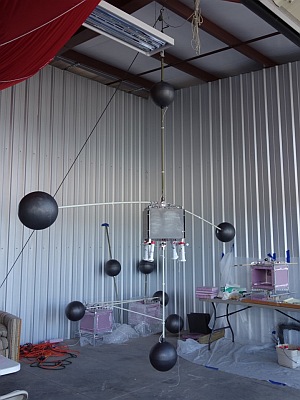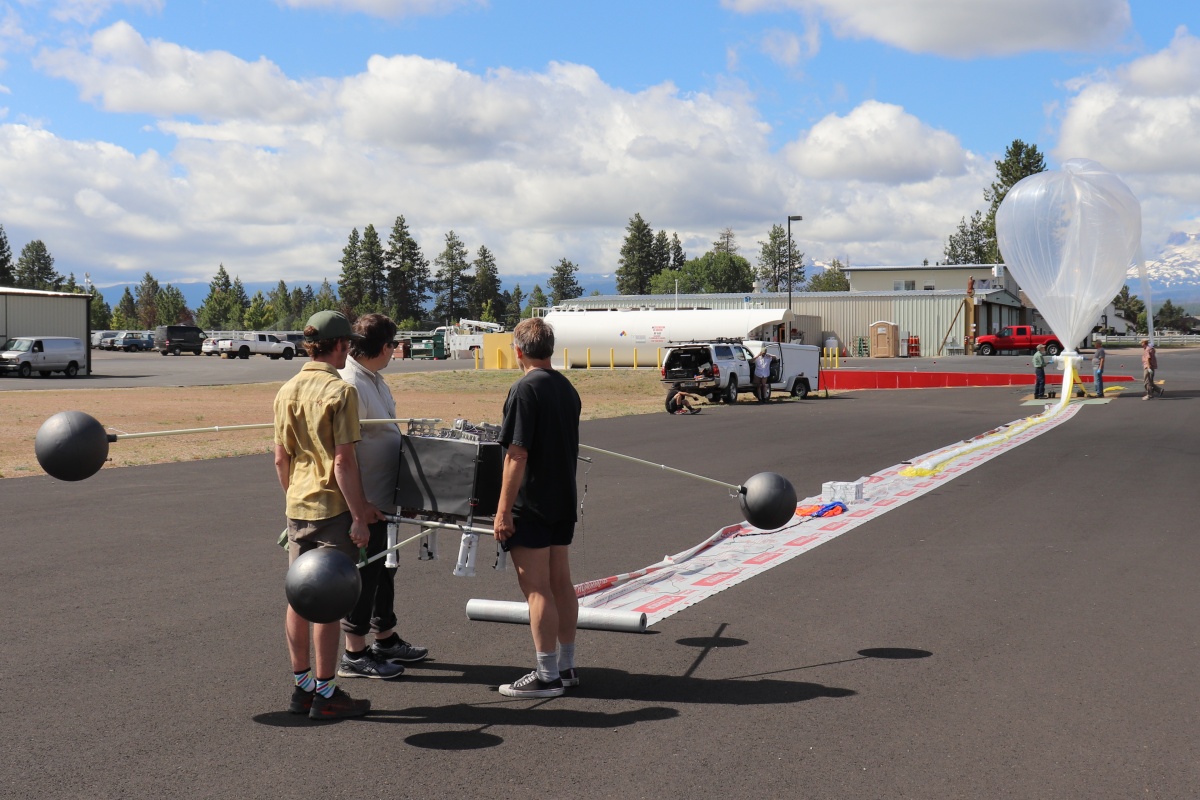Purpose of the flight and payload description
The purpose of the experiment was to quantify the global thunderstorm contribution to the global electric circuit (GEC). To do this, was necessary to make simultaneous measurements of both; namely, (a) the fair-weather (i.e. not over thunderstorms) return current of the GEC, which is more or less spatially invariant; and (b) global thunderstorm area, which can be used to model the electric current contribution using previous studies of electric fields and currents over thunderstorms. For the first part, at least two balloon payloads must be making simultaneous measurements in the stratosphere, separated by at least several hundred kilometers. The goal was to make sure the payloads' measurements agreed with each other, and to ensure continuity of fair-weather measurements if one balloon ended up temporarily over a thunderstorm.
At left we can see an image of one of the payloads (click to enlarge). It is composed by a cubic styrofoam box that holds all the flight electronics except probes and antennas. It is sealed, in order to keep the batteries as warm as possible. From this structure extend two pairs of Langmuir electric probes, one pair along the vertical axis and another along the horizontal axis. The distance between the opposing spheres of each pair is just over 3 meters, and each sphere is 30cm in diameter. The electric potential differences between each sphere and the center payload (which is "ground" as far as the instrument electronics are concerned) is measured, and also the potential differences between opposing spheres directly. By dividing the measured potential differences by the distance between pairs of spheres, the scientists obtained the electric field in the dimension spanned by the sphere pair. There is a small motor and gearbox on the tip of the upper boom; by rotating the payload slowly relative to the measurement cadence -but quickly relative to expected variations in the electric field- an almost 3D composition of the field can be obtained with only two pairs of probes. The instrument also measures the electrical conductivity of the atmosphere by driving the upper and lower spheres to known potentials relative to the center payload, and observe how the potential on each sphere relaxes to that driven by the ambient electric field. The electrical conductivity is related by the speed with which this potential decays. By simply multiplying the electric field and the electrical conductivity, the electric current density is obtained. Additional information to be included in post flight analysis includes for example to account for times when one balloon is over a thunderstorm, if applicable.
The total mass of the payload was about 45 lbs including 16 lbs of ballast which could be jettisoned by remote command. All data obtained by the instrument was telemetered in real time using a RockBLOCK Iridium modem which sent packets of information once per minute.
Details of the balloon flight
Balloon launched on: 7/10/2019 at 18:15 utc
Launch site: Sisters Eagle Airport, Oregon, US
Balloon launched by: ISTAR (International Science Technology And Research)
Balloon manufacturer/size/composition: Zero Pressure Balloon Raven SF-0.300-.3/0 TC - 300.000 cubic feet
End of flight (L for landing time, W for last contact, otherwise termination time): 7/10/2019
Payload weight: 22 kg
External references
- ISTAR Group website of the group that managed the entire launch operation
- Website of Todd Anderson Ph Candidate of the project Department of Earth and Space Sciences, University of Washington
15206If you consider this website interesting or useful, you can help me to keep it up and running with a small donation to cover the operational costs. Just the equivalent of the price of a cup of coffee helps a lot.



